Small Balcony, Big Harvest: Maximizing Your Growing Space
Transform your tiny balcony into a productive food garden with these proven space-maximizing strategies. Learn how to grow more fresh vegetables and herbs in small containers using vertical growing techniques, smart plant selection, and succession planting. Perfect for apartment dwellers who want homegrown produce without a yard.
Balcony Bloomers
8/5/20257 min read
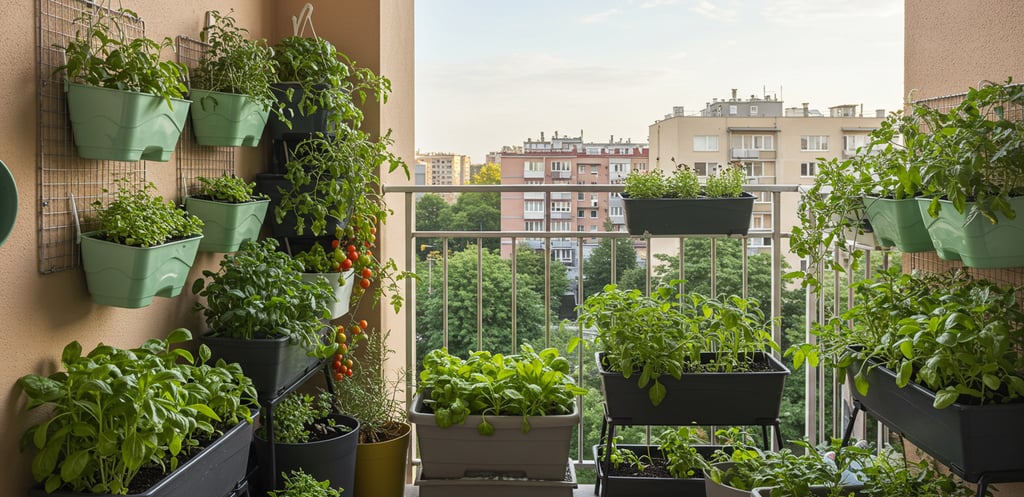

Living in an apartment doesn't mean you have to give up your dreams of fresh tomatoes and crisp lettuce. Trust me, I learned this the hard way after staring at my tiny 4x6 balcony for months, convinced I'd never be able to grow anything meaningful. Boy, was I wrong.
Your small balcony can absolutely become a productive growing space that yields enough fresh produce to make a real difference in your kitchen. The secret isn't having more space – it's using every square inch you have like a master gardener would.
Why Small Balcony Gardening Actually Works Better
Here's something most people don't realize: small space gardening often produces better results per square foot than traditional gardens. When you're working with limited balcony space, you naturally become more intentional about plant selection, soil quality, and maintenance. Every plant has to earn its spot.
Container gardening on balconies also gives you complete control over your growing conditions. Bad soil in your neighborhood? Not your problem. Weird drainage issues? You decide exactly how much water each plant gets. Plus, you can move containers around to chase the sun or protect plants from harsh weather.
The key to maximizing your small balcony harvest lies in three fundamental strategies: growing vertically, choosing high-yield varieties, and succession planting. Master these three concepts, and you'll be amazed at how much food you can grow in even the tiniest outdoor space.
Vertical Growing: Your Secret Weapon for Small Balcony Success
Think of your balcony as a three-dimensional growing space, not just floor space. The biggest mistake I see people make with small balcony gardening is only using the ground level. You've got walls, railings, and overhead space – use them all.
Vertical planters are absolute game-changers for small balconies. You can buy ready-made systems or create your own using repurposed materials. I've seen incredible harvests from simple setups using wooden pallets, hanging shoe organizers, and even old rain gutters mounted on walls.
Trellises and climbing supports turn your balcony walls into productive growing space. Beans, peas, cucumbers, and small squash varieties will happily climb up mesh or wire supports. Even some tomato varieties can be trained vertically to save precious floor space.
Hanging baskets aren't just for flowers – they're perfect for trailing crops like cherry tomatoes, strawberries, and herbs. Mount them at different heights to create layers of growing space. Just remember that hanging plants dry out faster, so they'll need more frequent watering.
Smart Container Selection for Maximum Balcony Yield
Not all containers are created equal when it comes to small balcony gardening. The right container choice can literally double your harvest from the same square footage.
Self-watering containers are worth the investment if you're serious about maximizing your balcony growing space. They maintain consistent moisture levels, which is crucial for steady production, and they reduce the time you spend on daily maintenance.
For root vegetables like carrots and radishes, deeper containers obviously work better, but you can grow surprisingly large harvests in shallower, wider containers. A single large container often produces more than several small ones because the root systems don't get cramped.
Window boxes attached to balcony railings are perfect for herbs and leafy greens. They don't take up floor space, and they're easy to access for daily harvesting. Just make sure they're securely mounted – nobody wants a container garden falling on someone's head.
High-Yield Plant Varieties That Love Small Spaces
This is where smart plant selection makes or breaks your small balcony harvest. Some vegetables are naturally better suited for container growing and small spaces.
Leafy greens are the absolute champions of small balcony gardening. Lettuce, spinach, kale, and arugula grow quickly, don't need deep containers, and you can harvest them continuously by picking outer leaves. Plus, you can succession plant them every few weeks for a constant supply.
Cherry tomatoes produce way more food per square foot than large tomato varieties. They're also more manageable in containers and many varieties are specifically bred for small space growing. Look for determinate varieties if you want a more predictable harvest schedule.
Herbs might seem like small potatoes, but think about how much you spend on fresh herbs at the grocery store. A small balcony herb garden can easily save you hundreds of dollars per year while providing fresher, more flavorful herbs than you can buy anywhere.
Bush beans and compact pepper varieties are perfect for balcony containers. They don't sprawl like their full-size cousins, but they still produce substantial harvests. Hot peppers, in particular, are incredibly productive in small containers.
Succession Planting: The Key to Continuous Harvests
Most people plant their balcony garden once in spring and call it good. Big mistake. Succession planting – sowing new crops every few weeks – is how you turn a small balcony into a production powerhouse.
For quick-growing crops like radishes and lettuce, plant a new container every two weeks. By the time one container is finished producing, the next one is ready to harvest. This keeps fresh vegetables coming all season long instead of getting everything at once.
You can also use succession planting to make better use of your containers throughout the growing season. Start with cool-season crops like peas in early spring, then replant those same containers with warm-season crops like beans once the weather heats up.
Maximizing Light on Your Small Balcony
Light is often the limiting factor in small balcony gardens, but there are ways to work with whatever exposure you have.
If your balcony gets morning sun but afternoon shade, focus on leafy greens and herbs. They actually prefer some protection from intense afternoon heat anyway. Full-sun balconies can handle fruiting crops like tomatoes and peppers.
Reflective surfaces can help bounce more light to your plants. A white wall, mirrors, or even aluminum foil can increase the light available to plants on the shadier parts of your balcony. Just don't create hot spots that might burn your plants.
Watering Strategies for Small Balcony Gardens
Balcony containers dry out faster than ground-level gardens, especially in windy or hot conditions. But overwatering kills more balcony plants than underwatering, so finding the right balance is crucial.
Group containers with similar watering needs together. Herbs generally need less water than vegetables, and clay pots dry out faster than plastic ones. This makes your watering routine more efficient and reduces the chance of over- or under-watering.
Drip irrigation systems designed for container gardens can be a game-changer if you travel frequently or just want to reduce daily maintenance. You can set up simple systems using timers and soaker hoses that keep your balcony garden thriving even when you're not around.
Soil and Fertilizer Tips for Container Success
Regular garden soil is too heavy for container growing and doesn't drain well enough for most balcony situations. High-quality potting mix designed for containers will give you much better results, even though it costs more upfront.
Container plants need more frequent fertilizing than ground-planted vegetables because nutrients wash out with regular watering. Slow-release fertilizers work well for busy gardeners, but liquid fertilizers give you more control over feeding schedules.
Compost is gold for small balcony gardens. Even if you can't make your own, buying quality compost to mix into your potting soil will improve both nutrient content and water retention.
Seasonal Planning for Year-Round Harvests
Your small balcony can produce food in multiple seasons if you plan ahead. Cool-season crops like lettuce, spinach, and kale can grow through mild winters in many areas.
Fall planting often works better than spring planting for some crops because there's less pest pressure and more consistent moisture. Plan your balcony garden for two main growing seasons rather than trying to keep everything going year-round.
Common Mistakes That Limit Balcony Garden Success
Overcrowding is the number one mistake I see in small balcony gardens. When space is limited, there's a temptation to cram as many plants as possible into each container. This usually results in smaller harvests, not bigger ones.
Choosing containers that are too small is another harvest killer. Most vegetables need more root space than people realize. When in doubt, go bigger – your harvest will thank you.
Ignoring your balcony's specific microclimate is a costly mistake. Wind, reflected heat from nearby buildings, and shade patterns all affect how your plants grow. Spend time observing your space before making planting decisions.
Making the Most of Your Small Balcony Harvest
The goal isn't just growing food – it's growing food that makes a real difference in your kitchen. Focus on expensive crops that you use frequently. Fresh herbs, salad greens, and cherry tomatoes often give you the best return on your small balcony investment.
Preserve your excess harvest to extend the value of your balcony garden. Even a small space can produce more than you can eat fresh during peak season. Learn to freeze herbs, dehydrate tomatoes, or ferment excess vegetables.
Your small balcony might not replace your grocery shopping entirely, but with smart planning and the right techniques, it can provide a surprising amount of fresh, homegrown food. The key is working with your space's limitations instead of against them, and remembering that in small space gardening, intensive beats extensive every single time.
Start small, experiment with different approaches, and don't be afraid to make mistakes. Every small balcony is different, and finding what works best for your specific situation is part of the fun. Before you know it, you'll be harvesting more fresh produce than you ever thought possible from your tiny outdoor space.
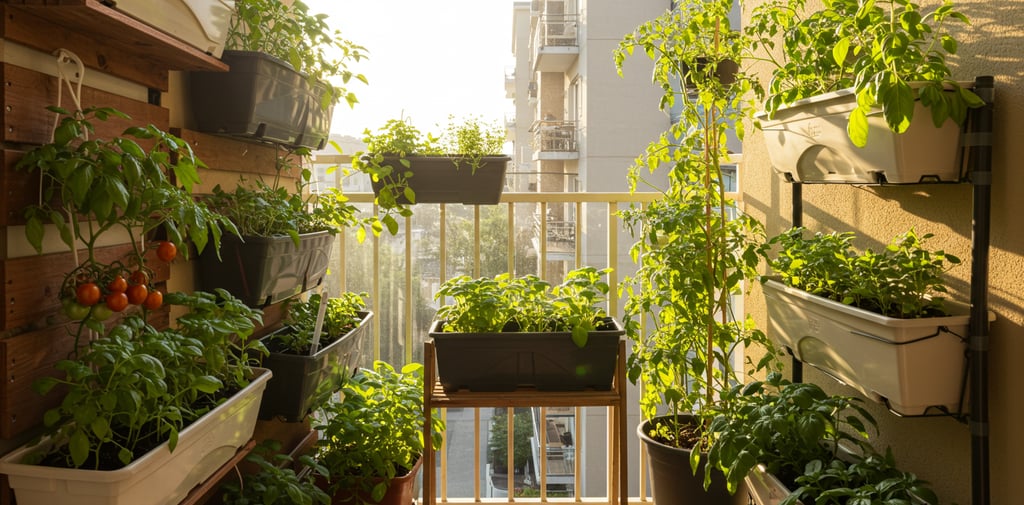

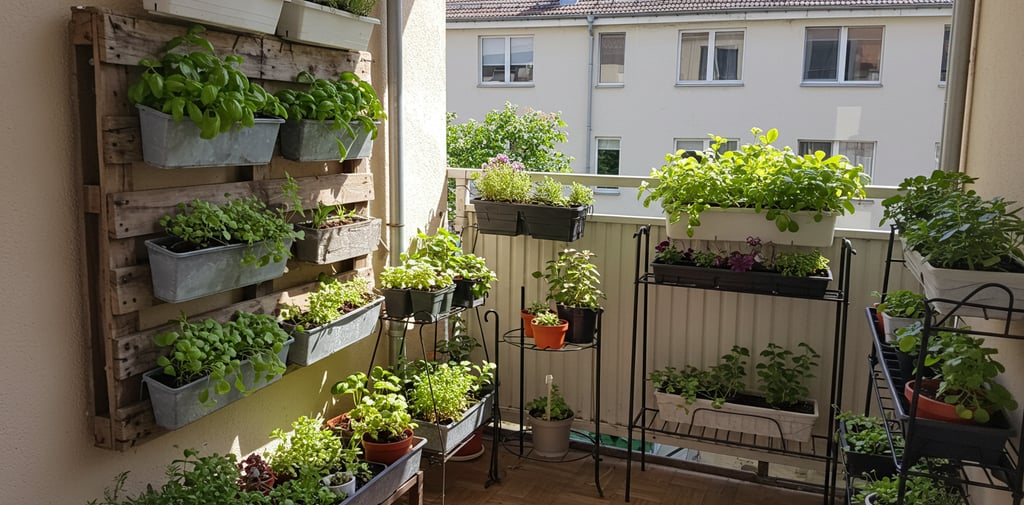

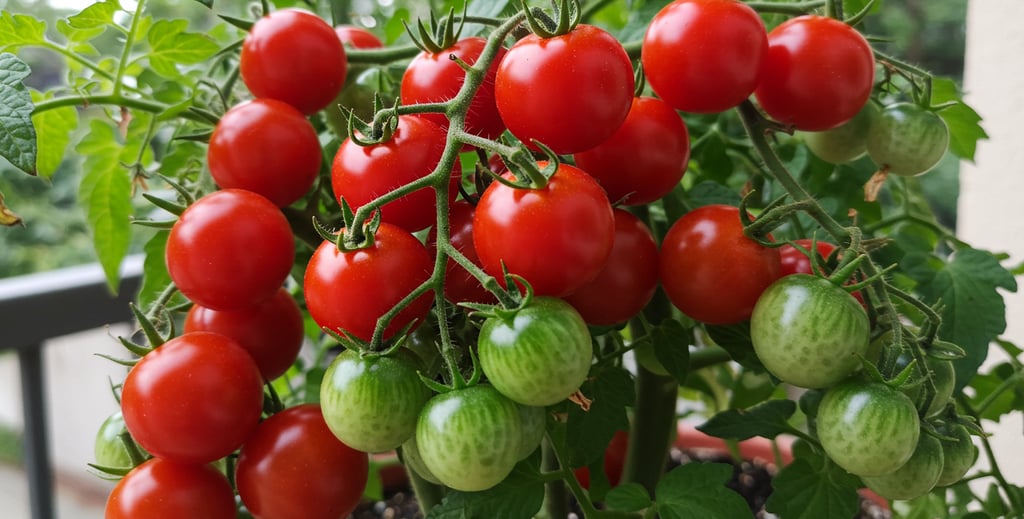

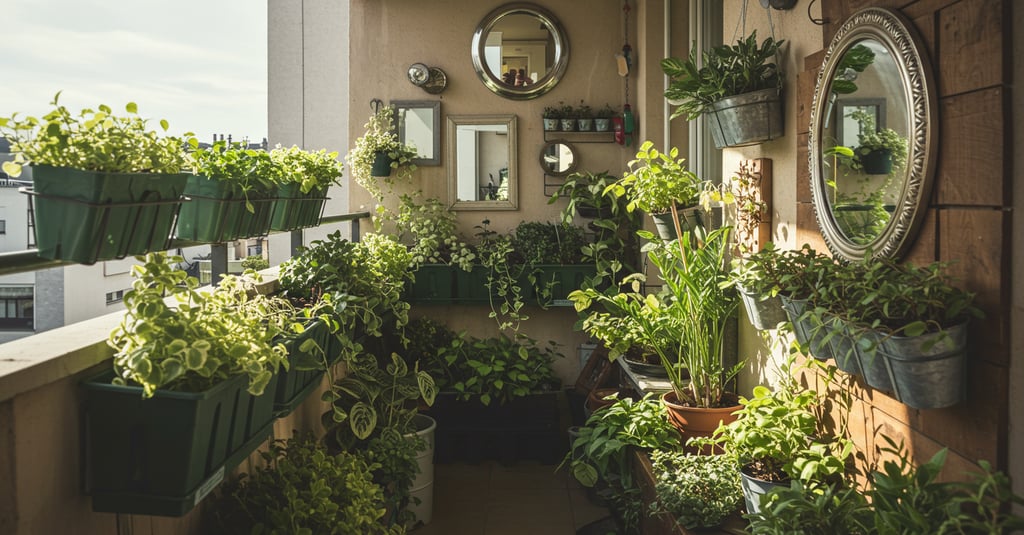

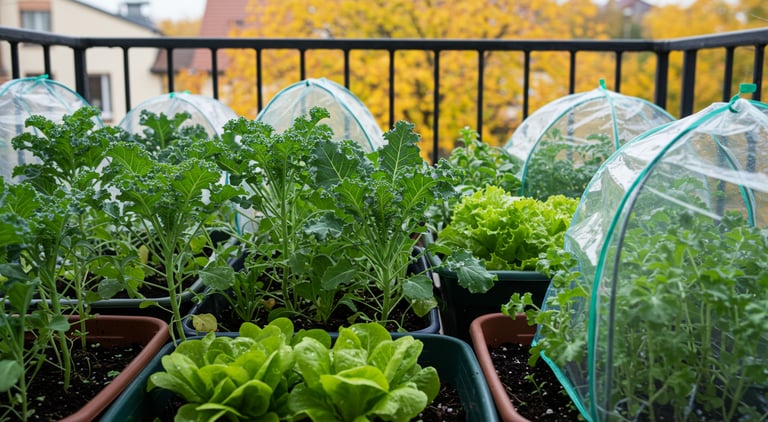

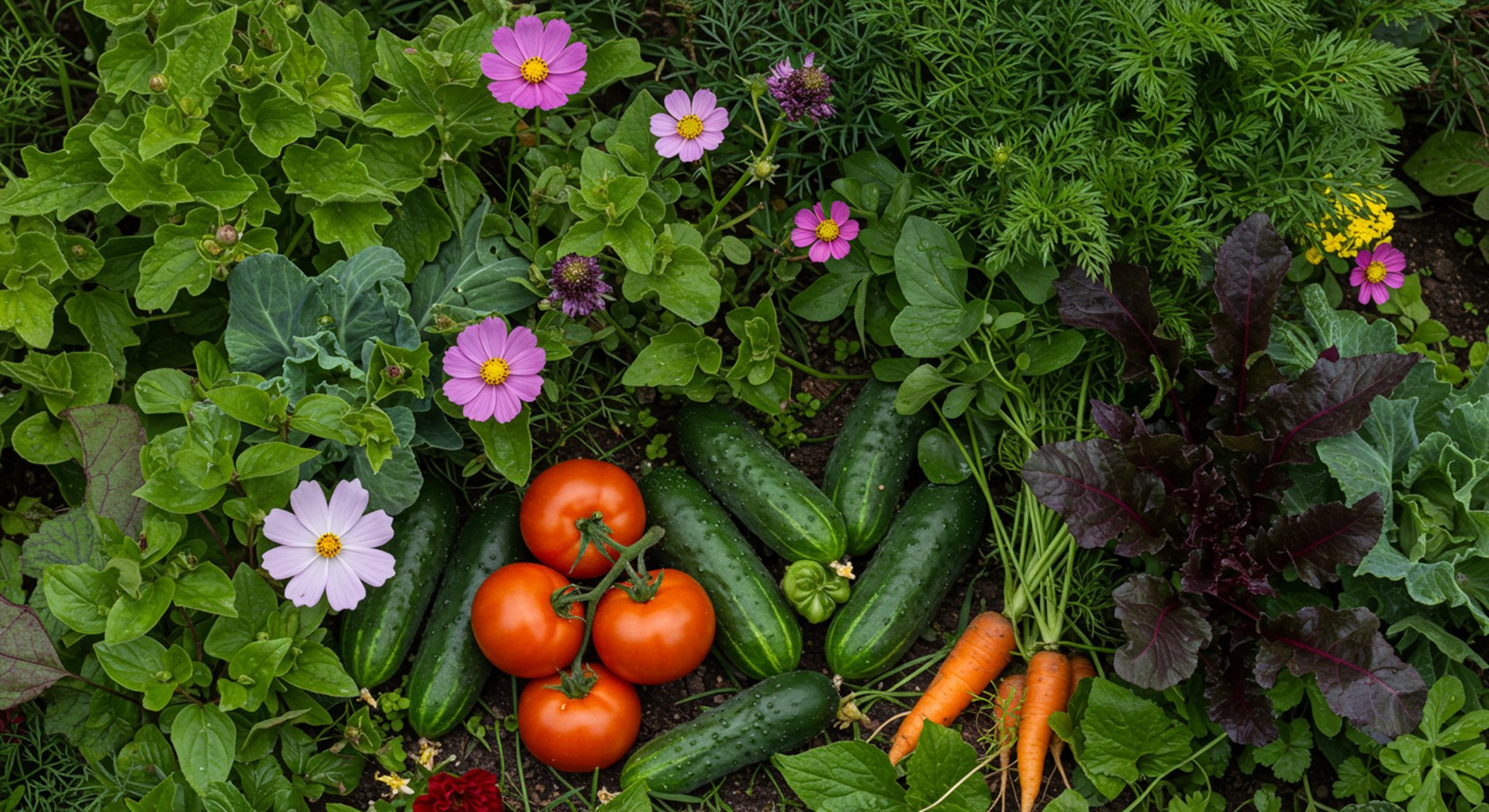
Join Our Growing Urban Plant Community
🌿 Grow Your Green Space—One Tip at a Time
Subscribe to the Balcony Bloomers newsletter and get:
🌱 Weekly balcony gardening tips for small spaces 🪴 Exclusive guides to growing herbs, veggies & flowers 🧪 Product reviews on planters, tools & eco-friendly gear 🎁 Free downloads, seasonal planting checklists & more
👉 Join 5,000+ city gardeners transforming their balconies into lush retreats. It’s FREE—and your plants will thank you.
Never Miss a Growing Tip
Join 5,000+ urban gardeners getting weekly insights on maximizing small spaces. Get the latest balcony garden ideas, tool recommendations that actually work, and seasonal growing tips delivered to your inbox every Tuesday.
BalconyBotanists@protonmail.com
(248) 716-3370
© 2025. All rights reserved.


